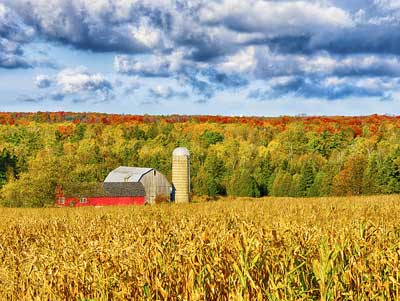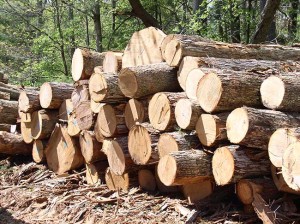Your Tax Bill
I just got my tax bill. Help!
What do many property owners complain about but few truly understand? Their tax bill. Woodlands are subject to some of the highest taxes, so it’s important to understand your bill.
Tax bill basics

Let’s review. The tax bill that arrives in December covers the previous 12 months of property ownership, with full payment due by the end of January (or one-half in January and the balance in July, if the bill is paid in installments). In other words, this bill designates the closing of that year’s tax cycle, with a new tax period beginning on January 1.
Looking ahead, tax assessments (the value placed on your property by an assessor) take place in March or April. Shortly thereafter, you receive your Statement of Assessment. The time when you receive this assessment is the right time to appeal should something look miscalculated or unrepresentative.
Consider the period before the Statement of Assessment arrives as an opportunity to educate yourself. Examine the tax bills for each parcel you own – are the parcel lines correct? Is the land classified properly?
The second question is especially important. It’s not uncommon for landowners to discover that their land hasn’t been correctly classified.
Agricultural forest in Wisconsin
Agricultural land and woodlands cover much of Wisconsin, so there’s a good chance you have both on your land. If these two land types border one another, any woodlands not in the Managed Forest Law program may qualify as “agricultural forest,” a classification that reduces the tax on those acres by 50 percent!
How do you know if your land qualifies as agricultural forest, and whether the tax assessor classified your land correctly? To answer these questions, we’ll take you through the Wisconsin statute on “agricultural forest” and what it means.
The statue reads:
The following definition of “agricultural forest” is effective January 1, 2005. Section 70.32(2)(c)1d, Wis. Stats. defines “agricultural forest” as “land that is producing or is capable of producing commercial forest products,” if the land satisfies any of the following conditions: (see below)
What this means:
Lands classified as “agricultural forest” needs to be producing or capable of producing commercial forest products and adhere to any of the following conditions.

The statue reads:
a. [The land] is contiguous to a parcel that has been classified in whole as agricultural land under this subsection, if the contiguous parcel is owned by the same person that owns the land that is producing or is capable of producing commercial forest products. In this subdivision, “contiguous” includes separated only by a road.
What this means:
To be classified as agricultural forest, your wooded parcel must be adjacent to a parcel classified entirely as agricultural and owned by you. Conservation Reserve Program (CRP) lands are considered agricultural lands. This includes diagonal parcels or those separated by a road.
The parcel is also still considered wholly agricultural if it includes residential land or right-of-ways, but not if it has acreage classified as “other” (e.g., building site) or “undeveloped” (e.g., marsh, idle cropland, pasture, etc.).
The statue continues:
b. It is located on a parcel that contains land that is classified as agricultural land in the property tax assessment on January 1, 2004, and on January 1 of the year of assessment.
What this means:
Your 2004 tax assessment is a critical piece of information. If during the 2004 assessment year a parcel contained any agricultural land, the adjacent woodlands on that parcel are classified as “agricultural forest.”
This rule began with the 2005 tax assessment and affects all future tax assessments so long as the acreage classified as agricultural in 2004 is present on January 1 of the current year of assessment.
This holds true even if the lands classified as agriculture in 2004 were classified as “other” or “undeveloped” in any year after 2004, which would have otherwise disqualified your woodland as “agriculture forest” for that tax assessment year.
The statute concludes:
c. It is located on a parcel at least 50 percent of which, by acreage, was converted to land that is classified as agricultural land in the property tax assessment on January 1, 2005, or thereafter.
What this means:
Beginning with the 2005 assessment and thereafter, if land is converted to land classified as agricultural, the adjacent woodlands are only classified “agricultural forest” if the agricultural lands cover at least 50 percent of the parcel.
That’s it! Now that you know what to look for, consider contacting your assessor or visiting the property lister’s office to verify that woodlands qualifying as “agricultural forest” are appropriately classified. Good luck!
